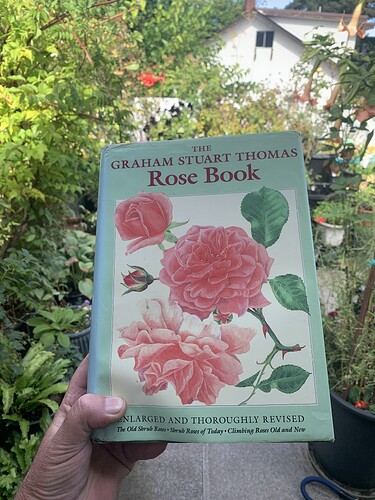@Roseseek, thanks. I might try those things.
Julie, I created a small garden of OGR’s several years ago, and even though I don’t use them a great deal for breeding, I really think of the Graham Stuart Thomas compilation “Rose Book” as my go-to for information on the old cultivars. It was very helpful.
@lee_hull, thanks, I eventually managed to read a bit of that book in a readable form, went away and it had gone and needed to renew it, which was again getting the wait sign interminably. It did look like a wonderful book and I am considering buying it, though the only copy currently on Amazon UK costs £35.
I agree, BN is an excellent OGR according to my observation with all traits you mentioned (despite it is not immune to blackspot). In addition, BN is very heat tolerate, the flowers it produced under the temperature more than 35℃ is almost identical to ones in spring (neither evidently smaller nor distorted) . But what puzzled me is that most Tea-Noisettes derived from BN are large climbers, so is it possible to create something short (like dwarf Polyanthas) using BN?
Louis XIV might be the worst OGR I seen and I would neither rate its disease resistance as “moderate” nor worry about mildew. It is just a blackspot magnet. I NEVER find it with flowers (and leaves) in the rose garden (zone 9a). I don’t think it is worth to use anyway, just an awful stuff.
While ‘Blush Noisette’ isn’t exactly a dwarf, its offspring seem capable of varying widely in habit according to the backgrounds of their other parents. Karl King’s ‘Sweetime’ (from a cross with ‘Popcorn’) is a good example on the small side of the spectrum. BN has also been speculated to be a parent of ‘Marie Pavie’. Crossing with teas, considering their R. gigantea-heavy background, is probably the reason for the vigorous climbing behavior of many tea-Noisettes. They are certainly a different breed from the original, small-flowered Noisettes.
Stefan
Thanks. I would discover more on this line.
